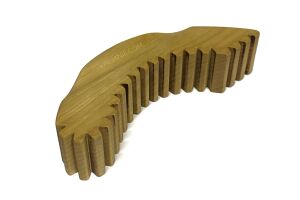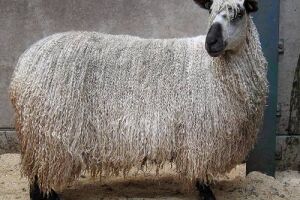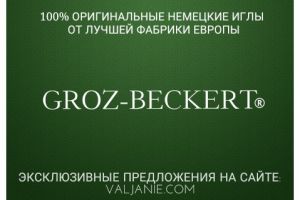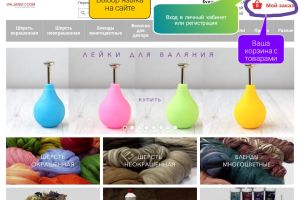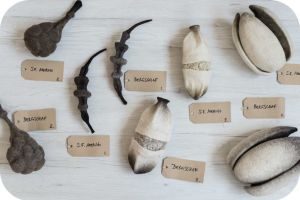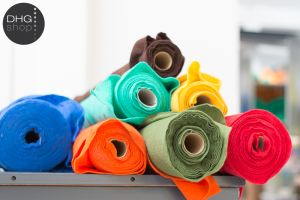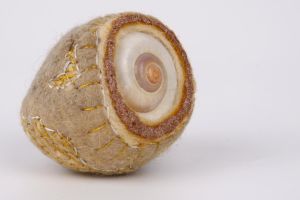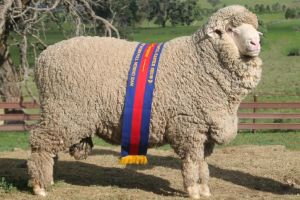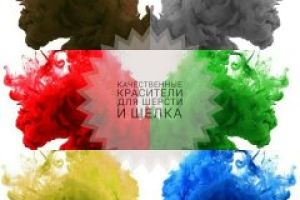Choosing Wool: A Guide to Materials for the Perfect Result
Choosing the right material is just as important as mastering technique. The wide variety of wool types can be overwhelming for beginners, but understanding their unique properties is essential for achieving the desired result in any felting project. This section provides an overview of the diverse world of felting materials, based on comprehensive data from experts.
Animal-Based Wool Types
- Australian Merino Wool: Extremely popular, known for its softness and fine fibers (14–24 microns). Its versatility makes it suitable for both wet and dry felting, making it an excellent all-purpose choice.
- Carded Wool (Carded Batts): This wool has been processed through carding equipment. The fibers are well mixed and fluffed, but oriented in different directions, forming a cloud-like mass. Usually sold as batts or rovings. Ideal for creating dense items in both dry and wet felting (toys, rugs, bags, slippers…).
- Camel Wool: Distinguished by its hollow fiber structure, making it exceptionally lightweight. Its natural, pleasant curls are often creatively used in felted garments to add unique texture and warmth. It’s also known for its healing properties, resistance to dirt, and ease of cleaning.
- Mohair: Sourced from Angora goats, mohair is a strong, durable fiber with a unique luster. It dyes beautifully. Varieties include Kid Mohair (23–27 microns, from young goats, very soft), Goating Mohair (from goats up to two years), and Adult Mohair (coarser, around 30 microns, often used for outerwear).
- Cashmere: This luxurious fiber, the undercoat of mountain goats, is known for its incredible softness (16–19 microns), lightness, exceptional warmth, and hypoallergenic properties—ideal for delicate items.
- Yak Wool: Tibetan yak wool is prized for its softness, elasticity, and excellent insulation. Perfect for inner layers or linings in felted garments, providing comfort and warmth.
- Alpaca Wool: From South American llamas, alpaca wool is strong, lightweight, warm, and has a beautiful silky sheen. Available in a wide range of natural colors (e.g., burgundy, gray, white). Baby Alpaca (17–18 microns) and Adult Alpaca (19–25 microns). Baby Alpaca is especially valued for children’s items due to its hypoallergenic and soft touch.
- Silk: Though of animal origin (from silkworms), silk is usually used not on its own but as an additive or decorative element in felting. It adds a beautiful sheen and takes dye well.
Wool Processing for Felting
Before being used, wool undergoes several stages of processing at the factory (washing, teasing, carding).
- Sliver: A minimally processed wool (usually white or cream) intended for felting. Used as a base for creating volume, as well as in both wet and dry felting. Sliver may contain small plant debris that is removed during wet felting. Suitable for stuffing toys, Waldorf dolls, inner layers of slippers and boots. However, if the top wool layer is thin, sliver fibers may show through in the final product. For small dry-felted forms, we recommend cleaned carded wool, which speeds up the process and prolongs your felting needles’ life.
- Combed Top (Roving): Wool that has undergone combing, leaving only long, aligned fibers. Short fibers are removed, resulting in a smooth, uniform strand. When wool of different colors is combed together, it forms a “multicolor” top — with fine, parallel strands of different shades. Ideal for smooth surfaces, fine detailing, and delicate work.
Plant-Based Fibers: Fibers such as viscose (often called “wood silk,” made from cellulose), flax (linen), Tencel, cotton, bamboo, and ramie can also be used decoratively in wet felting.
Plant-based decor is especially suited for adding effects in nuno felting — a technique where wool is felted onto fabric (often silk) to create unique textiles.
Synthetic Fibers (e.g., Acrylic): Synthetic fibers are known for their strength, elasticity, and lightfastness. Though they mimic some plant fiber properties, they tend to look cheaper in finished products. Caution is needed when ironing felted items with synthetics. Generally, they’re not ideal for wet felting. Occasionally used for making doll hair.
Blending: Different types of wool are often blended to achieve certain textures, visual effects, or to enhance specific product qualities.
Wool Thickness (Micron Count)
The micron count of wool affects its tactile feel, felting speed, and suitability for different projects.
- Fine Wool (16–18 microns): Very soft fibers used for delicate, skin-contact items. Common in felted jewelry, high-end toys, and garments like scarves and nuno-felted dresses.
- Medium-Fine Wool (22–30 microns): Coarser fibers or a blend of finer and coarser wool. Used for dense items like slippers, bags, mats, and interior decor. Wool over 24 microns may require surface trimming after felting.
- Medium-Coarse Wool (31–40 microns): Typically used for durable items like vintage-style toys or heavy fabrics (e.g., overcoat felts).
- Coarse Wool (40+ microns): Includes all fiber types (undercoat, intermediate fibers, guard hairs, dead hairs). Often undyed and used for very sturdy products like rugs.
Sheet Felt
A dense, pre-felted wool fabric, available in rolls or sheets. It can be cut and sewn, unlike loose wool.
- Thin Felt (1–1.5 mm): Perfect for intricate appliqué and fine details.
- Thick Felt: Used for bulkier items like garments, accessories (e.g., purses, wallets), or as a stable base for other crafts.
- Composition: Available in 100% wool, wool blends, acrylic, viscose, or polyester.
Extensive details on different wool types, their processing, and thickness demonstrate that material selection can be a major challenge for beginners. Providing detailed, comparative information helps address this and empowers customers to make informed choices, resulting in more successful projects and higher satisfaction. A systematic explanation of each type, its unique characteristics, and best applications helps beginners move from vague material options to confident decisions.
For example, knowing that Merino wool is versatile for both wet and dry felting, or that carded wool is ideal for adding volume, directly influences their first purchase and final results. This guide helps avoid common issues like misshapen products, unwanted textures, or felting difficulties.
Wool Thickness (Micron Range)
|
Wool Type |
Micron Range |
Description and Application |
|
Fine Wool |
16–18 |
For delicate items worn on skin (scarves, dresses, jewelry) |
|
Semi-Fine Wool |
22–30 |
For dense products (slippers, bags, rugs) |
|
Medium-Coarse Wool |
31–40 |
For durable items and vintage-style toys |
|
Coarse Wool |
40+ |
For carpets and technical uses, often uncolored |
Table: Which Wool Is Best for What
|
Material |
Micron Range |
Felting Type |
Best For |
|
Merino |
14–24 |
Wet / dry |
Clothing, scarves, toys |
|
Carded wool |
25–30 |
Wet / dry |
Toys, slippers, 3D forms |
|
Sliver |
28–32 |
Wet / dry |
Stuffing, inner layers |
|
Camel (Baby) |
~17–25 |
Wet |
Clothing, decorative elements |
|
Mohair (Kid) |
23–27 |
Decor |
Decor inserts, jewelry |
|
Cashmere |
16–19 |
Wet |
Clothing, luxury accessories |
|
Yak |
18–22 |
Wet |
Lining, inner parts |
|
Alpaca (Baby) |
17–25 |
Wet |
Children’s clothing, accessories |
|
Silk |
– |
Decor |
Shine, nuno felting, accents |
|
Viscose, linen, ramie |
– |
Wet |
Decorative elements, nuno felting |
|
Acrylic |
– |
– |
Temporary projects, not for wear |

